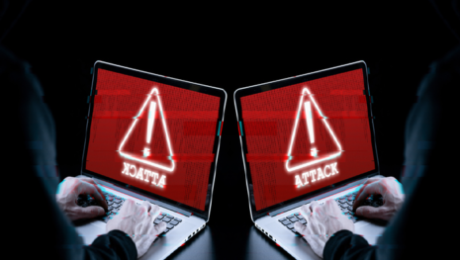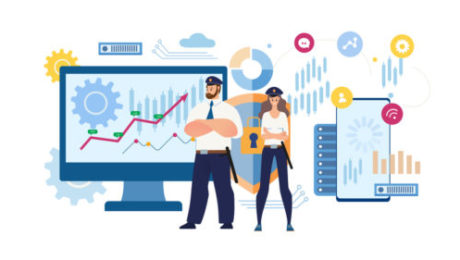Biden Signs Executive Order Addressing AI
This article is from RISQ Consulting’s Zywave client portal, a resource available to all RISQ Consulting clients. Please contact your Benefits Consultant or Account Executive for more information or for help setting up your own login.

President Joe Biden issued an executive order (EO) on Oct. 30, 2023, to establish standards for artificial intelligence (AI) safety and security, protect privacy, advance equity and civil rights, and advocate for consumers and workers. It also seeks to promote innovation and competition and advance American leadership around the world while ensuring responsible and effective government use of AI.
Directed Actions
The EO seeks to build on the voluntary commitments of 15 leading companies by:
- Requiring developers of the most powerful AI to share their safety test results and other critical information with the U.S. government
- Developing standards, tools and tests regarding AI’s safety, security and trustworthiness
- Protecting against the risks of using AI to engineer dangerous biological materials
- Protecting against AI-enabled fraud and deception by establishing standards and best practices for detecting AI-generated content and authenticating official content
- Establishing an advanced cybersecurity program to find and fix critical software vulnerabilities
- Ordering the development of a National Security Memorandum on AI use and security
The EO also seeks to address privacy concerns by calling for the passage of bipartisan data privacy
legislation and directs actions to prioritize federal support for accelerating the development and use of privacy-preserving techniques. It calls for action to strengthen privacy-preserving research/technologies and privacy guidance for federal agencies, develop guidelines for federal agencies to evaluate the effectiveness of privacy-preserving techniques, and evaluate how agencies collect and use commercially available information.
To advance equity and civil rights, the EO directs actions to provide clear guidance to landlords, federal benefits programs and federal contractors; address algorithmic discrimination; and ensure fairness in the criminal justice system. In support of workers’ rights, the EO calls for actions to develop principles and best practices, produce a report on AI’s potential impacts on the labor market, and study and identify options for strengthening federal support for workers facing labor disruptions.
In the pursuit of innovation and competition and advancement of American leadership, the EO directs action to catalyze AI research; promote a fair, open and competitive AI ecosystem; and expand the ability of highly skilled immigrants with expertise in critical areas to study, stay and work in the United States through existing authorities. The EO directs action to expand bilateral, multilateral and multistakeholder engagements to collaborate on AI; accelerate the development/implementation of vital AI standards; and promote the safe, responsible and rights-affirming development and deployment of AI abroad.
To ensure responsible and effective government AI use, the EO directs action to issue guidance for agencies’ use of AI, help agencies acquire specified AI products and services, and accelerate the rapid hiring of AI professionals. The White House states the administration will work with allies and partners to govern the development and utilization of AI. For more information, contact us today.
- Published in Blog
Wrongful Collection of Data Explained
This article is from RISQ Consulting’s Zywave client portal, a resource available to all RISQ Consulting clients. Please contact your Benefits Consultant or Account Executive for more information or for help setting up your own login.

Businesses of all sizes and sectors may be subject to unlawful data processing claims. According to the International Association of Privacy Professionals, lawsuits focusing on whether businesses lawfully collect and use personal data have been steadily increasing. These claims can cause significant financial and reputational damage to companies.
As businesses analyze the risks associated with personal data collection, they must be familiar with an evolving regulatory landscape and take steps to address their exposures. This article provides more information on what wrongful data collection is and areas of concern. It also provides tips for businesses to mitigate the risks associated with wrongful data collection.
What Is Wrongful Data Collection?
What constitutes wrongful, or unlawful, data collection varies by jurisdiction. While there currently isn’t an overarching national consumer data privacy law in the United States, several states have enacted legislation that affords individuals those protections. Aspects of U.S. laws also apply to certain sectors (e.g., the Health Insurance Portability and Accountability Act, or HIPAA, applies to health care) and individuals (e.g., children receive data protection through the Children’s Online Privacy Protection Act). Additionally, different laws are in place internationally. This range of legislation can make it difficult for businesses to understand the various rules that are in effect.
Even though it may be complicated, businesses have the duty to comply with applicable data privacy laws. For example, depending on the jurisdiction, there may be regulations that dictate how or if an organization may collect, use and share personal data. There may also be requirements for the business to inform consumers that data is being collected and to allow the consumer to opt out of that collection. Failure to adhere to relevant laws may be considered wrongful and businesses may be subject to fines and potential litigation.
Areas of Concern
Certain aspects of personal data collection are areas of concern. Examples of areas laws may regulate include:
- Biometric data—Collection of data regarding unique physical characteristics (e.g., fingerprints, faces, voice patterns) has been regulated by some jurisdictions. For example, Illinois has enacted the Biometric Privacy Act, which forbids businesses from collecting biometric data unless the business has informed the individual about the data being collected, provided information on how long it will be stored and received written consent.
- Pixel tracking—The use of pixel technology to track how individuals use websites to target advertisements may be subject to regulations. For example, under the European Union’s General Data Protection Regulation, pixel tracking technology may only be used if an individual consents, while the California Privacy Rights Act (CPRA) requires users to be notified of the implementation of pixels and how they will be processed.
Additionally, the United States Video Privacy Protection Act (1988), originally enacted to prevent the disclosure of personal information obtained from renting videos, has seen a modern application in lawsuits involving data collected through pixel tracking. Furthermore, HIPAA can be used to safeguard patients’ confidential health data that may be exposed to third parties utilizing pixels.
- Genetic information—Data that is compiled from the analysis of a person’s biological sample and involves genetic material (e.g., DNA, genes, chromosomes) may also be subject to regulations. For example, the Genetic Information Privacy Act in California provides its residents with rights and protections over their data when they use direct-to-consumer genetic testing companies.
- Precise geolocation—There may be legal obligations regarding collecting and processing data that is used to locate a consumer within a specific area. For example, the CPRA requires individuals to receive notice and the right to limit the use and disclosure of that precise geolocation information.
Risk Mitigation Strategies
It is essential for businesses to implement risk management strategies to reduce the likelihood of lawsuits, reputational damage, and regulatory fines and penalties stemming from wrongful data collection claims. Examples of techniques to consider include:
- Weigh the benefits and drawbacks of data collection and determine if alternative marketing strategies that do not require data collection exist.
- Provide notice and obtain consent before collecting, processing, using, sharing or selling personal data.
- Allow individuals to opt out of having their personal data collected.
- Limit personal data collection to only what is necessary.
- Monitor regulations as they are quickly evolving.
- Conduct audits of data collection practices to ensure they conform to applicable regulations.
- Provide education to employees on proper technology use and applicable legislation.
- Review insurance coverage with a licensed professional to determine if coverage is available for wrongful data collection claims.
Conclusion
Claims of wrongful data collection are rising, and businesses should take steps to mitigate their exposure to this risk. For more information and risk management guidance, contact us today.
- Published in Blog
Top 10 High-cost Claim Conditions in 2022
This article is from RISQ Consulting’s Zywave client portal, a resource available to all RISQ Consulting clients. Please contact your Benefits Consultant or Account Executive for more information or for help setting up your own login.

Stop-loss provider Sun Life released its 2022 list of high-cost claims, revealing the COVID-19 pandemic’s widespread impact on Americans’ medical care, mental health and infant care.
Sun Life analyzes its claims data annually to help self-funded employers understand trends and potential impacts of the highest-cost medical and injectable drug claims. According to the report, 71% of all stop-loss claims in 2022 came from the following top 10 conditions, diseases or disorders:
-
Malignant neoplasm: $324.8 million in stop-loss reimbursements
-
Cardiovascular: $142.2 million
-
Leukemia, lymphoma and multiple myeloma: $115.2 million
-
Orthopedics and musculoskeletal: $106 million
-
Newborn and infant care: $106 million
-
Sepsis: $89.7 million
-
Gastrointestinal: $70.2 million
-
Neurological: $70 million
-
Respiratory: $69.4 million
-
Urinary and renal: $54.3 million
While COVID-19 dropped from the top 10 to number 11, it continues to impact other medical conditions. For example, COVID-19 can affect cardiac risk, potentially triggering or accelerating preexisting coronary artery disease. Additionally, mental health conditions increased during the pandemic, with alcohol-related disorders as a top subcategory. Newborn and infant care claims due to preterm births are also on the rise. According to the report, pregnant women in the United States who have had or have COVID-19 have a 40% higher risk of preterm birth. Sun Life suggests that the alarming rate of preterm births is attributed to inadequate prenatal care and preexisting maternal health conditions—such as hypertension, diabetes and COVID-19—which added challenges in terms of underlying health and access to care.
View the full Sun Life report to discover the top 20 high-cost conditions for 2022 and how these numbers have trended over the past few years.
Employer Takeaways
Cancer remains the largest driver of high-cost claims, with 11 of the top 20 high-cost injectable drugs related to cancer treatment. However, cardiovascular disease continued to rise and took the number two spot in 2022. Heart failure, specifically, is the largest cardiovascular claim subcategory. Based on this report, COVID-19 continues to have a ripple effect on Americans’ health and access to care.
Employers should continue to monitor health-related trends to make the right employee benefits decisions for their organization and employees.
Contact us today for more information.
- Published in Blog
Extended Detection and Response Explained
This article is from RISQ Consulting’s Zywave client portal, a resource available to all RISQ Consulting clients. Please contact your Benefits Consultant or Account Executive for more information or for help setting up your own login.

Extended detection and response (XDR) is a security solution that offers organizations end-to-end visibility, detection, investigation and response across multiple security layers. Unlike endpoint detection and response (EDR), XDR provides a holistic view of threats across the entire technology landscape rather than only those within managed endpoints. This article explains what XDR is and how it works, outlines the benefits of XDR and discusses how it compares to EDR.
What Is XDR and How Does It Work?
XDR uses data collected across multiple security layers to provide IT and security teams with real-time, actionable threat information. By utilizing extended visibility, analysis and response across endpoints, workloads, users and networks, XDR can help organizations reduce blind spots, detect threats faster and jump-start threat remediation. Essentially, XDR helps security teams:
- Recognize advanced and hidden threats
- Detect and follow threats in and across various systems
- Improve the time it takes to detect and respond to threats
- Improve the threat investigation process
There are several components of XDR that provide organizations with a wider grasp of threats via the following:
- An analysis of internal and external traffic—XDR can identify cybersecurity threats even after they’ve bypassed system perimeters.
- Integrated threat intelligence—XDR learns from attacks on other systems to detect similar events in its own environment.
- Machine learning-based detection—XDR can detect zero-day and nontraditional threats that bypass signature-based methods.
The Benefits of XDR
XDR adds value to organizations by combining multiple security offerings into one incident detection and response product. Benefits of XDR include:
- Greater visibility and context—Threats that utilize legitimate software, ports and protocols can often slip past system defenses undetected. With XDR, security analysts can see threats on any security layer. It can also offer insights into how an attack happened, who was affected and how it spread.
- Improved prioritization—As cyberthreats become increasingly frequent, it can be difficult for IT and security teams to keep up with security alerts. XDR can help prioritize threats by grouping related alerts across the framework and presenting the most important ones.
- Enhanced automation—XDR’s automation abilities allow IT teams to handle a large volume of data and consistently execute complex processes.
- Faster detection and response—Since XDR is continuously monitoring the technology landscape, it enables organizations to detect and respond to threats faster than before.
- More sophisticated responses—XDR can tailor specific systematic responses and leverage other control points to minimize the overall impact of the affected endpoint.
How Does XDR Compare to EDR?
XDR is an evolution of EDR—a cybersecurity solution that continuously monitors security-related threat information and endpoint data to detect and respond to ransomware and other types of malware. However, EDR can only detect and respond to threats inside managed endpoints, which limits the scope of threats that can be detected. In contrast, XDR goes beyond the capabilities of EDR by analyzing all security layers and offering organizations a more holistic view of threats.
Conclusion
In an increasingly complex threat landscape, XDR solutions can provide organizations with flexible and efficient security enforcement and remediation. For more risk management guidance, contact us today.
- Published in Blog
Credential Stuffing
This article is from RISQ Consulting’s Zywave client portal, a resource available to all RISQ Consulting clients. Please contact your Benefits Consultant or Account Executive for more information or for help setting up your own login.

If and when you get hacked, it’s easy to think cyber criminals used some high-tech program or code to gain access to your accounts. The truth is, however, that data breaches aren’t always this sophisticated, and all malicious parties need is a little trial and error to steal your personally identifiable information. This tactic is known as credential stuffing, and it’s becoming a common tool for cyber criminals of all kinds.
Simply put, credential stuffing attacks are when a malicious party takes a stolen username and password and tries it on a variety of different websites. For example, a hacker may have purchased your Google username and password from the dark web.
Assuming that you use the same password for multiple accounts, the hacker would test these credentials on other platforms (e.g., banking or social media websites) using botnets (groups of computers tasked with various commands). Essentially, by using information from one account, criminals can potentially access data from a variety of platforms, draining bank accounts or gathering information they can sell to other malicious parties.
Credential stuffing can affect everyone, from individual users to the biggest companies. In fact, a Yahoo breach that impacted approximately 500 million users was largely carried out using credential stuffing.
Thankfully, because credential stuffing relies on victims having the same password for multiple accounts, there are some simple ways to protect yourself:
- Avoid using the same password for multiple accounts—Credential stuffing works because many users use the same password for multiple accounts. Be sure to change your passwords often and never use the same password across different accounts.
- Use two-factor authentication—While complex passwords can deter cyber criminals, they can still be cracked. To prevent cyber criminals from gaining access to your accounts, two-factor authentication is key. Through this method, users must confirm their identity by providing extra information (e.g., a phone number or unique security code) when attempting to access corporate or personal applications, networks and servers. This additional login hurdle means that would-be cyber criminals won’t easily unlock an account, even if they have the password in hand.
- Create strong password policies—For employers, ongoing password management can help prevent attackers from compromising your organization’s password-protected information. You’ll want to create a password policy that requires employees to change their password on a regular basis, avoid using the same password for multiple accounts and use special characters. Long passphrases are becoming increasingly popular as well, and may be a good option for your organization.
- Provide security training—Even the most robust and expensive data protection solutions can be compromised should an employee click a malicious link or download fraudulent software. As such, it’s critical for organizations to thoroughly train personnel on common cyber threats and how to respond. Your employees should also know your cyber security policies and know how to report suspicious activity.
For additional cyber risk management guidance and insurance solutions, contact us today.
- Published in Blog
Patch Management Explained
This article is from RISQ Consulting’s Zywave client portal, a resource available to all RISQ Consulting clients. Please contact your Benefits Consultant or Account Executive for more information or for help setting up your own login.

Patch management is the process of acquiring and applying software updates to a variety of endpoints, including mobile devices, computers, servers and embedded devices. Installing patches regularly is necessary to correct errors, help protect data and optimize system functions. This article provides information on how a consistent approach to patching and updating software can limit exposure to various exploits.
What Are Patches?
Patches modify operating systems and software to improve security, fix bugs and improve performance. They are created by software developers and address vulnerabilities attackers may target.
Why Is Patch Management Necessary?
Patch management is necessary for the following reasons:
- Security—Hackers look to exploit cybersecurity weaknesses. Installing patches fixes software vulnerabilities and therefore reduces an organization’s cybersecurity risks.
- Compliance—Regulatory bodies or government agencies may require organizations to adhere to patch management standards. Meetings those requirements can help businesses avoid sanctions, fines or penalties.
- Feature improvements—In addition to addressing security issues and fixing bugs, patches can also offer feature and functionality improvements to help software run smoothly.
- Minimize downtime—With the enhancements that patches provide, programs may run more efficiently. This can increase production by helping minimize downtime and improving the user experience.
How Is Patch Management Performed?
The patch management process can be carried out by a company’s IT team, an automated patch management tool or a combination of both. Steps in the patch management process include:
- Identifying IT assets (inventory) and their locations—Taking stock of IT assets and where they are located is a crucial first step in the patch management process. This is especially important as employees increasingly work remotely.
- Identifying critical systems and vulnerabilities—Being aware of critical systems and identifying and tracking vulnerabilities are also key aspects of patch management. It is important to take note of existing security features (e.g., firewalls and antivirus software) and what they are protecting against. With this information, an IT team can more readily determine which systems need to be patched when vulnerabilities are discovered or reported.
- Testing and applying patches—Before applying the patches to all systems, it is best to test them on a representative subset of IT inventory. This can help ensure the updates will not create unforeseen issues. Once testing is complete, begin rolling out the patches to the rest of the assets. It is advisable to do this in batches, as this can help identify potential issues before they become too widespread.
- Tracking progress and maintaining records—During the rollout, it is advisable to keep track of the progress being made. After the patches have been successfully installed, it is essential to keep accurate documentation that notes which assets have been updated.
Conclusion
Having a comprehensive patch management process not only increases a company’s cybersecurity posture and helps keep the business running smoothly, but it also is a practice frequently required by insurance underwriters in order to obtain cyber insurance. Contact us today for more information.
- Published in Blog
Double Extortion Ransomware Attacks
This article is from RISQ Consulting’s Zywave client portal, a resource available to all RISQ Consulting clients. Please contact your Benefits Consultant or Account Executive for more information or for help setting up your own login.

In recent years, ransomware attacks have steadily been on the rise. These incidents—which entail cybercriminals compromising a device or server and demanding a large payment be made before restoring the technology (as well as any data stored on it) for the victim—are one of the most damaging cyberattack methods, incurring an average of $1 million in total losses per incident.
As these attacks become increasingly common, numerous ransomware techniques have also emerged. Specifically, double extortion ransomware attacks are now a potential cybersecurity concern for organizations across industry lines. This technique follows a similar protocol to that of a typical ransomware attack, but comes with an extra threat—the victim must pay a ransom not only to regain access to their technology and data, but also to keep that data from being uploaded publicly online.
Double extortion ransomware attacks are particularly concerning, seeing as these incidents can further pressure organizations to comply with ransom demands in order to keep their data private. Review the following guidance to learn more about how double extortion ransomware attacks work and what your organization can do to prevent such an attack.
How Double Extortion Ransomware Attacks Work
To outline the general framework of a double extortion ransomware attack, this technique starts out like most other ransomware incidents, in which a cybercriminal first gains access to their target’s device or server—often via phishing scams, nonsecure websites or malicious attachments. From there, the cybercriminal is able to compromise the victim’s technology and encrypt data stored on it. Then, the cybercriminal delivers their ransom demand and accompanying consequences for noncompliance.
Contrary to a typical ransomware incident, however, these consequences are twofold. That is, failing to pay the ransom could result in the cybercriminal both permanently restricting the victim’s access to their technology and sensitive data, as well as sharing this data publicly on the internet. Although double extortion ransomware attacks can occur at any organization, these incidents are most common within establishments that store a considerable amount of sensitive data. This includes health care facilities, financial institutions, government organizations and large retail businesses.
Double extortion ransomware attacks can be significantly more damaging for affected organizations than typical ransomware incidents. This is because even if organizations have protocols in place (e.g., storing data in multiple secure locations) that allow them to recover their compromised information without paying a ransom, they may still be pressured to do so in order to keep their data from going public. After all, a data breach can lead to further ramifications—including reputational damages, regulatory fines and class action lawsuits.
What’s more, cybercriminals who conduct double extortion ransomware attacks are known to demand higher ransom payments, sell or trade stolen data to other attackers for future extortion attempts and still move forward with sharing data publicly even after the ransom is paid (whether on purpose or by accident)—making these attacks all the more damaging.
Preventing Double Extortion Ransomware Attacks
When it comes to combatting double extortion ransomware attacks, it’s important to prioritize standard ransomware prevention measures. This includes conducting routine employee training on how to detect potential ransomware risks (e.g., suspicious emails or attachments), implementing policies that prohibit browsing nonsecure websites on organizational servers or devices, and installing adequate security features on all workplace technology (e.g., a virtual private network, antivirus programs, data encryption software, email spam filters, an internet firewall and a patch management system).
In addition to these key prevention measures, the best course of action for reducing double extortion ransomware attack risks is to establish an effective cyber incident response plan for your organization. This plan should explicitly address double extortion ransomware attack scenarios and outline steps that employees should take to limit the damages during such an event.
Lastly, it’s vital to secure appropriate insurance coverage for ultimate peace of mind in the event of a ransomware attack. A dedicated cyber insurance policy can offer much-needed support and resources when an attack occurs, minimizing the potential damages and financial impact on your organization.
For additional risk management guidance and insurance solutions, contact us today.
- Published in Blog
Creating a Cybersecurity Culture
This article is from RISQ Consulting’s Zywave client portal, a resource available to all RISQ Consulting clients. Please contact your Benefits Consultant or Account Executive for more information or for help setting up your own login.

Employees are an organization’s first line of defense against cybercriminals. For this reason, they are also commonly targeted. In fact, the vast majority (88%) of data breaches are caused by employee mistakes, according to Stanford University. Unfortunately for organizations, a single mistake can result in costly losses, reputational damage and lost or stolen data.
In order to keep your organization safe from cybercriminals, cybersecurity must become an integral part of company culture—something that is valued and upheld by every member of the organization. Cybersecurity should be top of mind for every employee when choosing whether to click a link, open an email or download documents from the web.
This article contains tips for improving employee engagement and creating a cybersecurity culture that will help protect your organization against cybercriminals.
Cybersecurity Culture Explained
An organization’s security culture will not grow on its own. To transform security training into everyday practices, organizations must invest in their security culture and constantly nurture it. A strong and resilient cybersecurity culture can benefit an organization in a number of ways, including:
- Protects the organization against cyberthreats and data breaches
- Strengthens customer trust and loyalty
- Improves brand reputation
Although many organizations recognize the benefits of having a cybersecurity culture, they may fail to successfully create one for multiple reasons. One of the most common reasons is a lack of employee buy-in. In fact, one survey found that 60% of organizations don’t believe they have successfully achieved employee buy-in for cybersecurity practices. Lack of executive buy-in is also a common cause of failure. This may result from outdated thinking that cybersecurity only belongs to the IT department or a lack of understanding about the pervasiveness of the issue.
Fortunately for organizations, the main stumbling blocks to creating a thriving cybersecurity culture can also guarantee success if leveraged effectively.
Best Practices
When cultivating a cybersecurity culture, organizations should consider the following best practices:
- Engage the C-suite. Senior executives are sometimes resistant to adopting good cyber hygiene. This has to change if your organization is going to create a successful cybersecurity culture. Employees need to see management leading by example if they’re going to buy into a healthy cybersecurity culture. Encourage leaders to join the conversation and reinforce that cybersecurity is every employee’s responsibility.
Additionally, senior executives are one of the biggest targets for cybercriminals. Ensure they are doing their part in upholding cybersecurity values by teaching them how to identify and defend against targeted cyberattacks.
- Inspire ownership of cybersecurity. Clearly communicate what’s at stake to your employees and explain that your organization needs their help. It’s not enough to simply explain changes to security protocols. Ensure employees understand why these changes have been made and what you’re trying to do to protect the organization. It’s imperative that employees understand that no security system is foolproof and, therefore, it’s up to them to minimize threats and avoid unnecessary risks.
- Create engaging cybersecurity programs. Cybersecurity training should not be presented as a one-off occurrence. If you want your employees to embrace cybersecurity as part of their culture, provide fun training based on real experiences. Consider leveraging discussion forums, online games, in-person training and mock phishing exams as part of your holistic approach to cybersecurity learning. Brief and frequent lessons will also be more digestible and remind employees that cyber awareness is part of their corporate life.
- Bring back the basics. When discussing cybersecurity, many organizations make the mistake of skipping basic training. This can cause confusion and prevent core cybersecurity values from resonating with employees. According to one survey, 50% of all employees haven’t had formal cybersecurity training, and 96% keep passwords saved on their devices for easy access. When creating and teaching good cyber hygiene, don’t forget basic principles such as strong password policies, two-factor authentication and limits on security, downloads and network access.
- Make it easy. Ensure employees know where to report suspicious emails and how to check the authenticity of work-related communications. Whenever possible, encourage open lines of communication between your employees and the IT department. This will help encourage employees to proactively reach out to IT for help or to report mistakes.
- Celebrate success. Make cybersecurity part of performance reviews and reward systems. It is also beneficial to acknowledge employee successes one-on-one by expressing appreciation or offering rewards for their commitment to your organization’s cybersecurity goals.
Conclusion
When workplace cybersecurity is treated as a simple check-the-box exercise, costly mistakes can occur. Teaching employees to value and take responsibility for their actions can help organizations reduce their chances of becoming a victim of a cyberattack.
Contact us today for more cyber guidance.
- Published in Blog
General Cybersecurity Best Practices for Modern Vehicles
This article is from RISQ Consulting’s Zywave client portal, a resource available to all RISQ Consulting clients. Please contact your Benefits Consultant or Account Executive for more information or for help setting up your own login.

Modern vehicle technology has transformed in the past several years as autonomous driving, vehicle electrification and car connectivity features have become more common. While these digital innovations in the automotive industry have added significant customer value, they have also exposed vehicles to cybercriminals attempting to gain access to critical in-vehicle electronic units and data. This article discusses cybersecurity threats modern vehicles face, the importance of the automotive industry providing protections against those risks and best practices for minimizing cybersecurity threats.
Cybersecurity Threats in Modern Vehicles
These days, vehicles are becoming increasingly dependent on connectivity and technology that runs complex software. There are about 100 million lines of software code in today’s vehicles, and by 2030, they’re expected to have roughly 300 million. The overabundance of complex software code within vehicles offers ample opportunity for cyberattacks.
Cyberattacks on modern vehicles could endanger vehicle inhabitants and others, and they may also be used to track vehicles or related data. Hackers can accomplish these attacks through physical or remote avenues:
- Physical access—When hackers gain physical access to a vehicle’s internal communication system, they can affect vehicle operations, such as steering, acceleration and braking.
- Remote access—Modern vehicles utilize Bluetooth technology, remote start applications and GPSs. Once hackers gain remote access, they can transfer knowledge from computers to vehicles and vice versa.
Importance of Cybersecurity in Modern Vehicles
While in-car cybersecurity threats are still relatively new, they are an ongoing concern. It is now the responsibility of automakers to consider cybersecurity an integral part of their core business functions and development efforts. Systems and components that govern vehicle safety features must be protected from harmful attacks, unauthorized access, damage or other threats that might interfere with safety functions.
Best Practices
A layered approach to vehicle cybersecurity can help reduce the probability of an attack’s success and mitigate the ramifications of unauthorized system access. The following are general best practices for modern vehicle cybersecurity:
- Leadership priority on product security—An emphasis on mitigating cybersecurity challenges associated with motor vehicles and motor vehicle equipment should be a priority for automotive industry suppliers and manufacturers. By stressing the importance of cybersecurity from the leadership level down to the staff level, corporations can emphasize the seriousness of managing cybersecurity risks and prioritize cybersecurity throughout the product development process.
- Vehicle development process with explicit cybersecurity considerations—The entire lifecycle of a vehicle—conception, design, manufacture, sale, use, maintenance, resale and decommission—should be taken into consideration when addressing cybersecurity risks, especially since there is more flexibility to design and implement protective measures early in the development process.
- Information sharing—In late 2014, the National Highway Traffic Safety Administration (NHTSA) encouraged the automotive industry to establish Auto-ISAC, an industry-driven community for sharing and analyzing intelligence about emerging cybersecurity risks to vehicles. Vehicle manufacturers, automotive equipment suppliers, software developers, communication services providers, aftermarket system suppliers and fleet managers are strongly encouraged to join Auto-ISAC and share timely information concerning cybersecurity issues.
- Security vulnerability reporting program—Members of the automotive industry should make information reporting easy for the security research community and the general public to help identify cybersecurity vulnerabilities.
- Organizational incident response process—While it’s not possible to predict all future attacks, organizations can prepare their responses, processes and staff to handle incidents effectively. Organizations should develop a product cybersecurity response process that includes:
- A documented incident response plan
- Roles and responsibilities that are clearly identified within the organization
- Communication channels and contacts outside of the organization that are clearly identified
- Procedures for keeping information up to date
- Self-auditing—To establish a clear and controlled process for managing software and related vulnerability risks, organizations must ensure documentation and document controls are in place. For process management documentation, members of the automotive industry should:
- Document the details related to their vehicle cybersecurity risk management process
- Retain documents through the expected lifespan of the associated part
- Implement and follow a control protocol
To assist companies in better understanding their cybersecurity practices and how to improve them, procedures for internal management and documentation review should also be established.
- Education—Continuous education of existing and future workforces can assist in improving the cybersecurity of motor vehicles. NHTSA encourages vehicle manufacturers, suppliers, universities and other stakeholders to work together to support the educational efforts of the workforce.
- Aftermarket/user-owned devices—Aftermarket devices, such as insurance dongles, and user-owned devices, such as cellphones, could present unique cybersecurity challenges. Before these devices are connected to vehicle systems through interfaces provided by the manufacturer, they should be authenticated and provided with appropriate, limited access.
- Serviceability—The average motor vehicle requires regular maintenance and occasional repair to operate safely. The automotive industry should consider the serviceability of vehicle components and systems since vehicles can remain in use for over a decade.
Conclusion
The automotive industry can work towards protecting electronic systems, communication networks, control algorithms, software, users and underlying data from malicious attacks, damage, unauthorized access or manipulation by implementing cybersecurity best practices. Contact us today for more risk management guidance.
- Published in Blog
- 1
- 2










